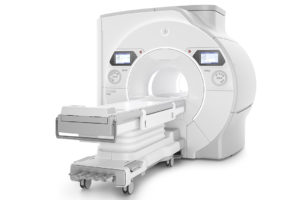What is magnetic resonance imaging?
Magnetic resonance imaging, or MRI, is a diagnostic scan that uses magnetic fields and pulses of radio wave energy to produce images of the body’s inside. An MRI can detect diseases, injuries, or monitor how well a patient is doing with treatment. Unlike traditional X-rays and computed tomography (CT) scans, MRIs do not produce potentially harmful ionizing radiation.
What happens during magnetic resonance imaging?
During an MRI, you will lie down on an adjustable table that slides into the MRI machine. A lab assistant or technician will help you into a comfortable position where you will remain for the test’s duration. The technician will take a series of images to be reviewed by a radiologist once the test is complete.
What are the risks of magnetic resonance imaging?
An MRI is a safe and painless procedure. However, those who have claustrophobia may find the scan uncomfortable. Due to the magnets’ force, an MRI may not be recommended for patients with a pacemaker or an artificial metal joint.
To learn more about magnetic resonance imaging, request an appointment with one of our experts today!
We have the latest in MRI technology.
 Baptist Health’s Little Rock hospital was among the first in the country to use the new GE SIGNA Hero, the latest in MRI technology that is helping the health care heroes at Baptist Health provide even more amazing patient care.
Baptist Health’s Little Rock hospital was among the first in the country to use the new GE SIGNA Hero, the latest in MRI technology that is helping the health care heroes at Baptist Health provide even more amazing patient care.
Designed to increase efficiency and maximize diagnostic potential while keeping the patient experience at the forefront, this state-of-the-art MRI is producing next-generation images for Baptist Health’s growing cardiovascular, neurology, orthopedic, and oncology service lines and further positioning Baptist Health as a leader in diagnostic imaging in Arkansas.
With better image quality, enhanced workflows, increased productivity, improved patient comfort, and greater sustainability, the GE SIGNA Hero has the potential to make difficult exams routine while at the same time improving patient comfort during the exam. For more information.

